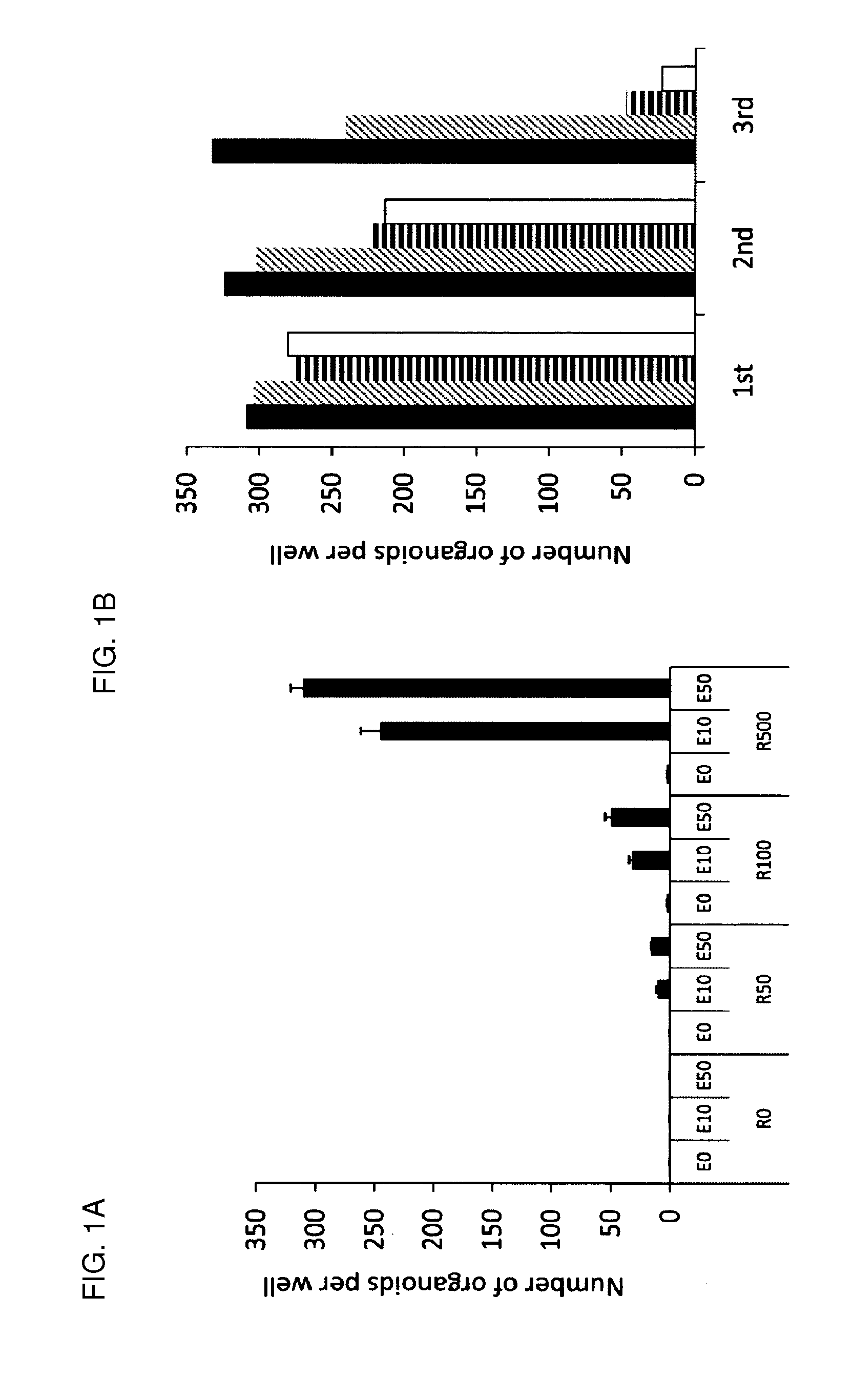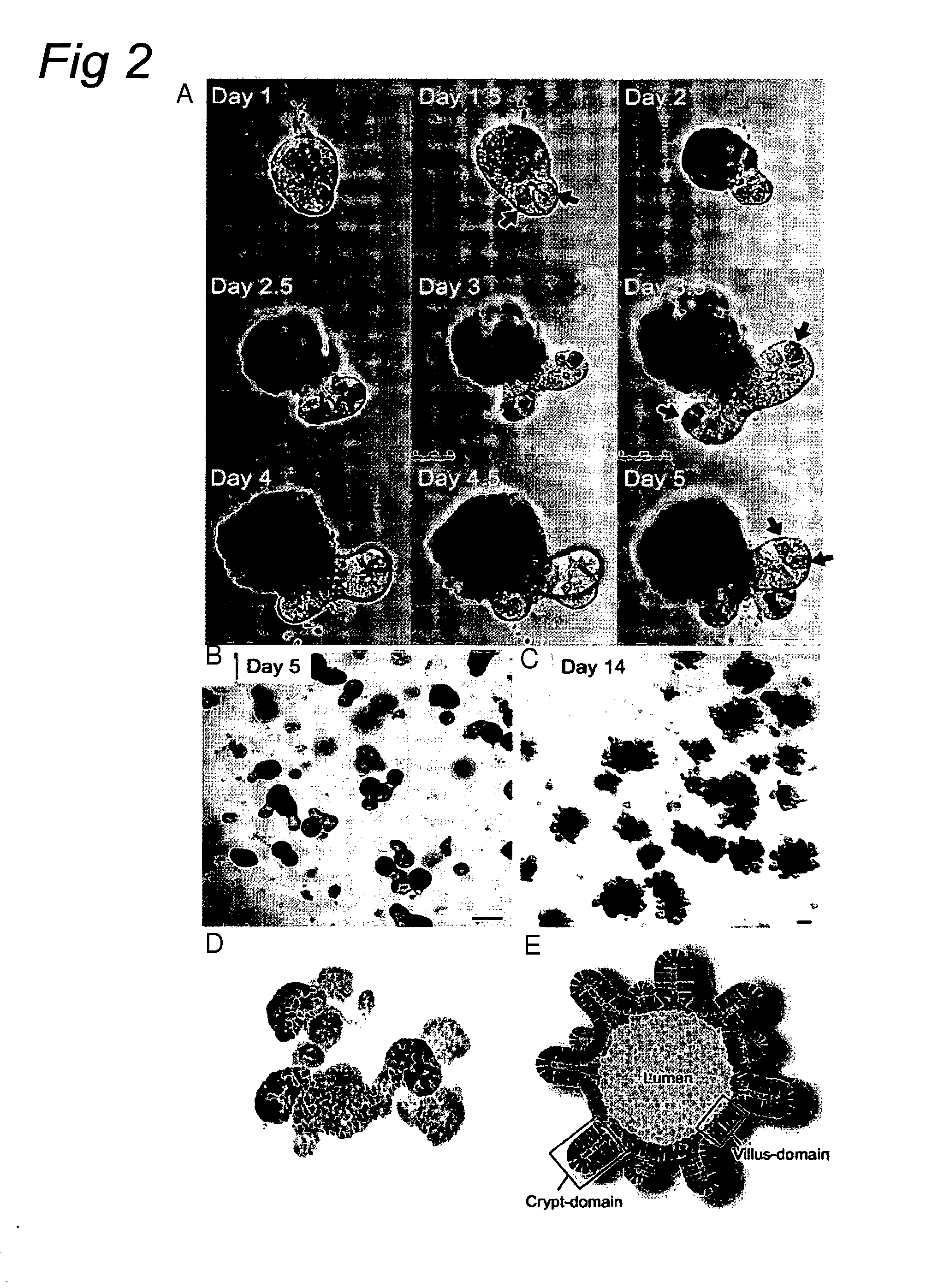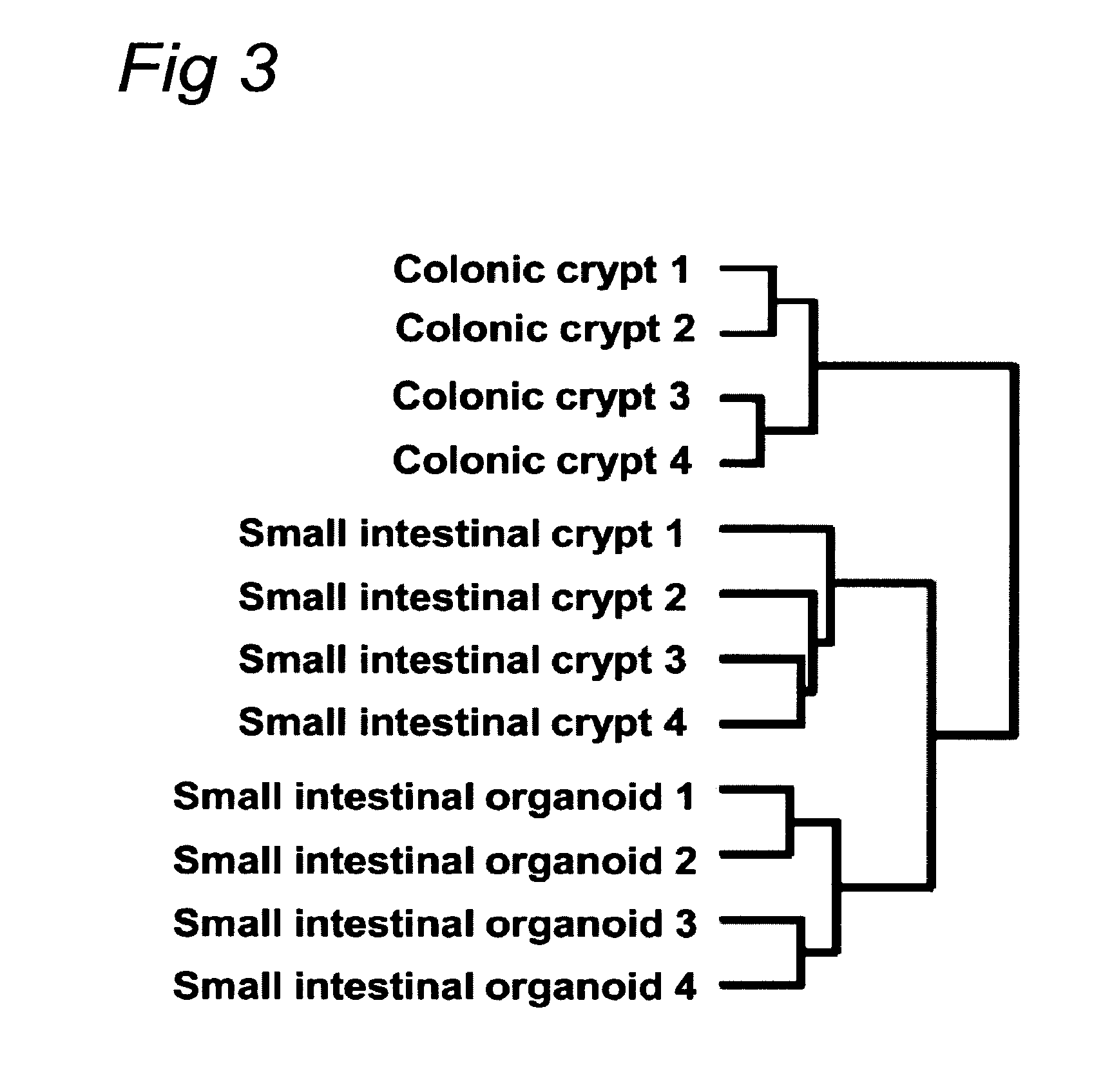Culture medium for epithelial stem cells and organoids comprising the stem cells
a technology of epithelial stem cells and culture medium, which is applied in the field of culture medium, can solve the problems of not knowing the basic physiology of the crypt-villus and the culture system
- Summary
- Abstract
- Description
- Claims
- Application Information
AI Technical Summary
Benefits of technology
Problems solved by technology
Method used
Image
Examples
example 1
Culturing of Small Intestine Crypts and Villi In Vitro
Materials and Methods
[0120]Mice: Outbred mice of six to twelve weeks of age were used. Generation and genotyping of the Lgr5-EGFP-Ires-CreERT2 allele1 has been previously described.1 Rosa26-lacZ or YFP Cre reporter mice were obtained from Jackson Labs.
[0121]Crypt isolation, cell dissociation and culture: Crypts were released from murine small intestine by incubation in 2 mM EDTA / PBS for 30 minutes at 4° C. Isolated crypts were counted and pelleted. 500 crypts were mixed with 50 μl Matrigel (BD Bioscience) and plated in 24 well plates. After polymerization of Matrigel, 500 μl of crypt culture medium (Advanced DMEM / F12 with growth factors (10-50 ng / ml EGF (Peprotech), 500 ng / ml R-spondin 111 and 100 ng / ml Noggin (Peprotech)) was added. For sorting experiments, isolated crypts were incubated in culture medium for 45 minutes at 37° C., followed by resuspension with a glass pipette. Dissociated cells were passed through 20-μm cell str...
example 2
Culturing of Colon Crypts and Villi In Vitro
Material and Methods
[0139]Wnt3a-Conditioned Medium
[0140]A Wnt3a ligand-expressing cell line and the same cell line, without the Wnt3a ligand (control medium) are cultured for a period of three to four weeks. The cells will produce Wnt3a as soon as they stop grown at confluency. The medium will be harvested and tested in the TOPflash assay, a luciferase assay using a TCF-responsive elements-luc construct (TOP) and the same construct, but with mutations in the TCF-responsive elements (FOP). The ratio between TOP / FOP should be more than 20 for the medium to be used in cultures. The medium is diluted 25-50% when used in the cultures to regenerate tissue.
[0141]Freshly isolated colon was opened and washed with PBS or DMEM, and cut into small pieces. The fragments were incubated with 2 mM EDTA / PBS for 1 hour at 4° C. under gentle rocking. Following removal of EDTA solution, the tissue fragments were vigorously suspended in 10 ml of cold PBS with ...
example 3
Culturing of Adenomas In Vitro
Materials and Methods
[0144](See Example 1.)
Results
[0145]Adenomas have been historically difficult to culture in vitro. Since the above-described conditions were used to successfully culture healthy crypts derived from small intestine as well as colon, it was determined whether similar conditions could sustain adenomas in vitro. After isolation of adenoma from APC− / − mice using 2.5 mM EDTA, single adenomas were cultured under similar conditions as described above. Importantly, these conditions were adequate to maintain growth of the adenomas in vitro, however, R-spondin had become redundant. This can be easily explained by the fact that it no longer is necessary to induce the Wnt signaling pathway, since the absence of APC in these cells will automatically result in nuclear β-Catenin. This makes R-spondin, a Wnt agonist, redundant in culturing adenomas in vitro. FIG. 16A, and in larger magnification in FIG. 16B, show that, in contrast to normal crypt org...
PUM
 Login to View More
Login to View More Abstract
Description
Claims
Application Information
 Login to View More
Login to View More - R&D
- Intellectual Property
- Life Sciences
- Materials
- Tech Scout
- Unparalleled Data Quality
- Higher Quality Content
- 60% Fewer Hallucinations
Browse by: Latest US Patents, China's latest patents, Technical Efficacy Thesaurus, Application Domain, Technology Topic, Popular Technical Reports.
© 2025 PatSnap. All rights reserved.Legal|Privacy policy|Modern Slavery Act Transparency Statement|Sitemap|About US| Contact US: help@patsnap.com



